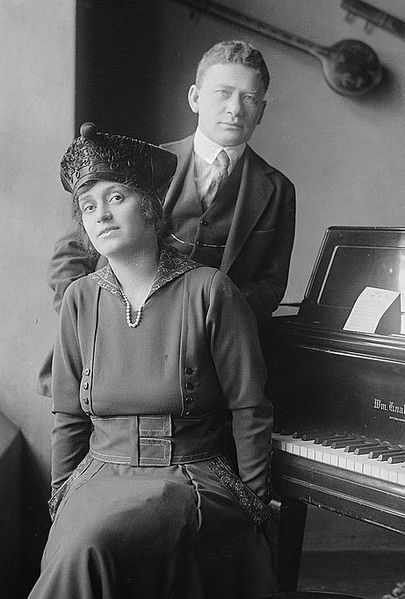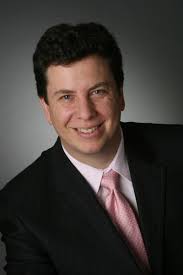
Alma Gluck and Efrem Zimbalist
Before there was Angelina Jolie and Brad Pitt…before there was Humphrey Bogart and Lauren Bacall…before there was Elizabeth Taylor and Richard Burton…There was Efrem Zimbalist and Alma Gluck. Read More About This…
 Growing up in a family of Hazzans and Klezmer musicians, Cantor Elias Rosemberg may have been born to perform.
Growing up in a family of Hazzans and Klezmer musicians, Cantor Elias Rosemberg may have been born to perform.
From his early days as a wedding singer in Buenos Aires to his present position as the Cantor for Temple Emanuel in Newton, MA. (the largest Conservative synagogue in New England) his talent and energy have made him a stand-out performer. No stranger to radio, television, and the recording industry, he won the “Argentina Sings for Israel” vocal contest in 1998.
Since coming to the United States in 2000, he has continued to receive honors and recognition for his talent as a great singer and as a gifted Hazzan. His repertoire includes Cantorial, Israeli, Yiddish, and Ladino, as well as opera and Broadway selections. True to his Argentinean roots, he also enjoys singing Tango. At the Cantors Assembly Convention in 2002 he was asked to sing the memorial prayer at the Holocaust Museum in Washington DC. Read More About This…
 Cantor Joseph Gross is a walking encyclopedia of knowledge about Jewish liturgy, Cantorial music, Cantorial voices and the history of the Cantorate in North America.
Cantor Joseph Gross is a walking encyclopedia of knowledge about Jewish liturgy, Cantorial music, Cantorial voices and the history of the Cantorate in North America.
A delightful gentleman who has stored a lifetime of learning into his diminutive frame, Cantor Joseph Gross showed up at the Judaica Sound Archives a little over three years ago wondering if he could be of any help. His warmth and his big smile took us in immediately. But what captivated us was his encyclopedic knowledge of all things Cantorial and liturgical.
As he spoke I could not help but think that he has probably forgotten more than most of us will ever know on the topic. But as he continued, I realized that he is blessed with almost perfect recall. Not much seems to have been forgotten at all. You may have heard of people with photographic memories, but Cantor Gross is the only person I have ever met with “phonographic memory,” i.e. he can recall voice and music impeccably. Read More About This…

Vintage Jewish piano roll boxes
Player pianos, pianolas and piano rolls were all the rage during Prohibition.
By the early 1920’s new advances in piano-roll technology gave rise to a complex, performance-oriented style of music that became the soundtrack of an era. Read More About This…
5774 A new year. In case you haven’t noticed...the world is changing.
 Digital Access & Online Collections, Events & General Interest, Judaic Collection, Music History & Performer Highlights
|
Digital Access & Online Collections, Events & General Interest, Judaic Collection, Music History & Performer Highlights
|  Cantor Moshe Schwimmer, Conservative synagogue, cultural preservation, High Holy Days, Jewish Religious & Holiday Music, One-of-a-kind recordings, Rosh Hashanah, Yom Kippur
Cantor Moshe Schwimmer, Conservative synagogue, cultural preservation, High Holy Days, Jewish Religious & Holiday Music, One-of-a-kind recordings, Rosh Hashanah, Yom Kippur



